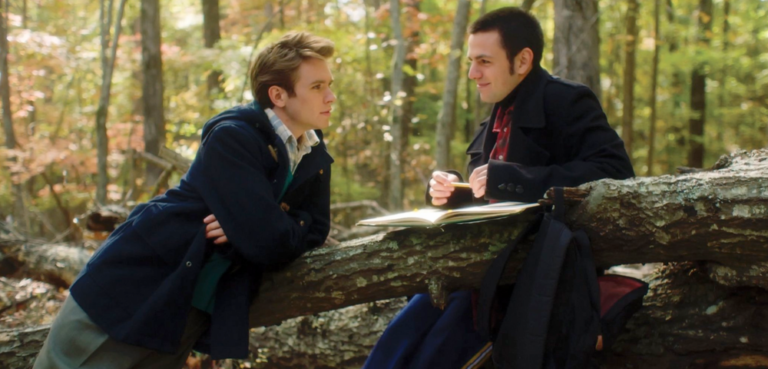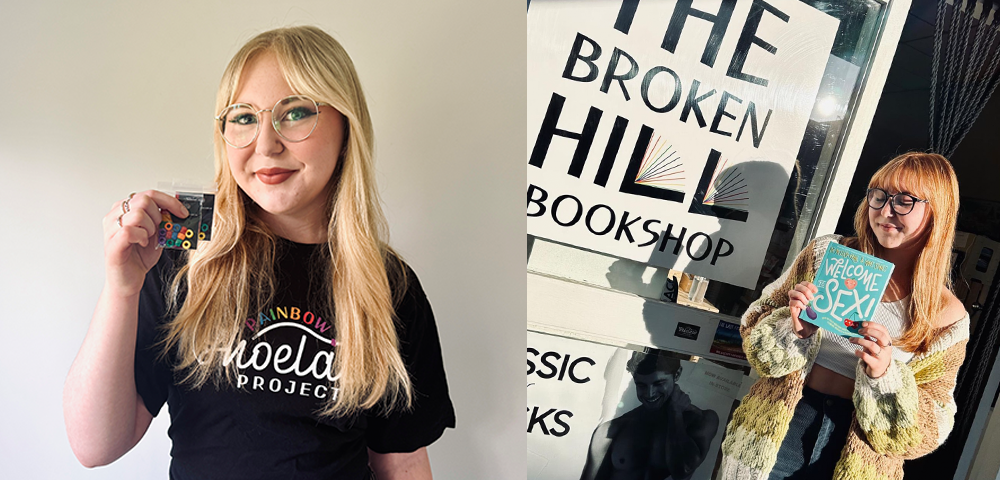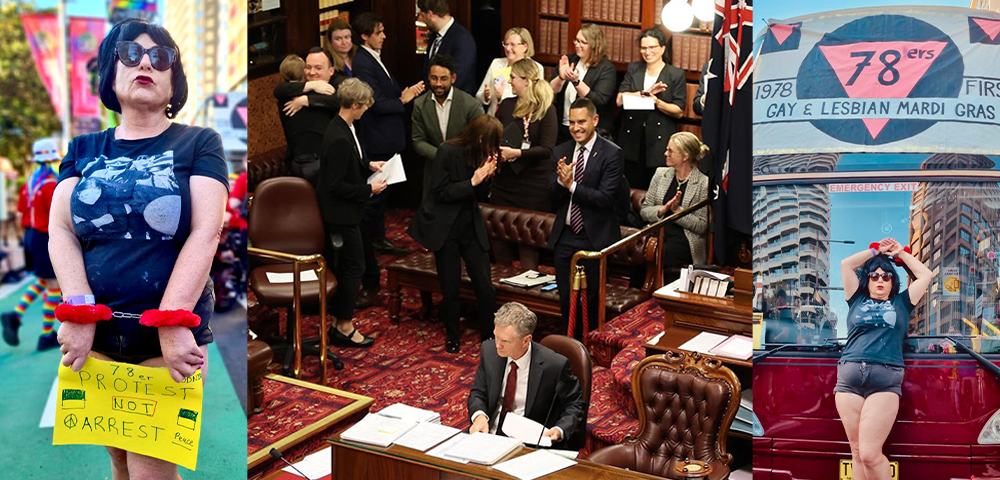
Last week, a film crew landed in my living room. I was to be interviewed for a documentary called John and Tim, being made by Waterbyrd Filmz, about the lives of John Caleo and Timothy Conigrave. Conigrave wrote Holding the Man, a candid and magical memoir of his 15-year relationship with Caleo.
It’s a book with a special place in Australian life. It was published by Penguin in February 1995, just a few months after Conigrave’s death. It’s never been out of print and I think is up to its 14th reprint. It’s been published in Spain (2002) and North America (2007). It won the United Nations Human Rights Award for Non-Fiction in 1995 and was listed as one of the ‘100 Favourite Australian Books’ by the Australian Society of Authors for its 40th anniversary in 2003. In 2009, it was nice to see Penguin publish it in its $9.95 Popular Penguins orange stripe series. My guess is that it’s one of the most ‘passed on’ of Australian books.
In many ways, it’s a simple book. Conigrave was born in 1959 and went to Xavier College in Melbourne, an elite Jesuit school (also attended by Bill Shorten and Sir Les Patterson). Tim, who wanted to be an actor, fell in love with John, the captain of the football team. They declared themselves boyfriends in 1976. Tim went to NIDA and John became a chiropractor, and despite unrelenting obstacles they remained together until John’s death on Australia Day, 1992.
The book is written in disarmingly straightforward prose, without literary pretension of any kind, and might be read simply as a “growing up in the ‘70s” story. The book is full of references to music, films and TV programs of the period. It’s a lot of fun.
But HIV/AIDS gets in the way. As an account of the devastation caused by that virus in Sydney during the ‘80s and ‘90s, it’s unsurpassed. If any book can be guaranteed to make you cry, it’s this one. It does so, I think, for a range of complex reasons, not the least of which is that it describes a rare love.

I was being interviewed because I was involved in the theatrical adaptation of the book. In 2005, as artistic director of Sydney’s Griffin Theatre Company, I commissioned Tommy Murphy to adapt the memoir. By November 2006 we had it onstage. We remounted it six times, most recently in 2010 in London’s West End.
The interview encouraged many memories to the surface. I remembered sitting with Tommy in Beare Park just below my apartment in Sydney’s Elizabeth Bay. We’d just had a great run at Griffin with Tommy’s first play on a professional stage, Strangers in Between.
I wanted to find something else for him, and so asked whether he thought adapting this book was a good idea and whether he thought he was the person for the task. I knew he was, but wanted him to say it.
To my mind, Tommy had the sensitivity, sense of humour and theatrical imagination I believed necessary for any stage version.
Tommy had heard of the book, but had not read it. The cover – a blurry photograph of two partially naked men – made him dismiss it, he said. But I asked him to read it. He did so, and then wrote me the most astonishing email.
He described at length the experience of reading the book on a bus journey to his parents’ home in Queanbeyan and getting to the final chapters with his head on his boyfriend’s lap, sobbing.
He described how reading Tim’s life was like reading his own. Tommy had no experience of HIV/AIDS, which made some of the book a startling revelation, but Tim’s travels through student theatre and NIDA and work at Griffin Theatre Company tuned with many of Tommy’s experiences.
Tommy felt a profound need to tell the story for another generation. He was 25, 20 years younger than Tim would have been, and felt a mission.
I never met Tim, but as the film crew packed up their equipment and left me alone, I remembered how close we had become. We had several friends in common, had stood and worked in many of the same places, had entwined our lives in ways I could never have imagined.
I have several boxes marked ‘Holding the Man’, containing drafts of scripts, research material, letters from people affected by the production, cards, photographs. These are some of the physical remnants of a special endeavour. But in some private rooms of my heart, those places of retreat in times of need and longing, I hold memories that never fail to repair me, for they sing to the miracle of unconditional love.
This is an excerpt from a post on David Berthold’s blog, Carving in Snow. You can read his full account at: carveinsnow.blogspot.com.au
David Berthold is the artistic director of La Boite Theatre Company in Brisbane.









